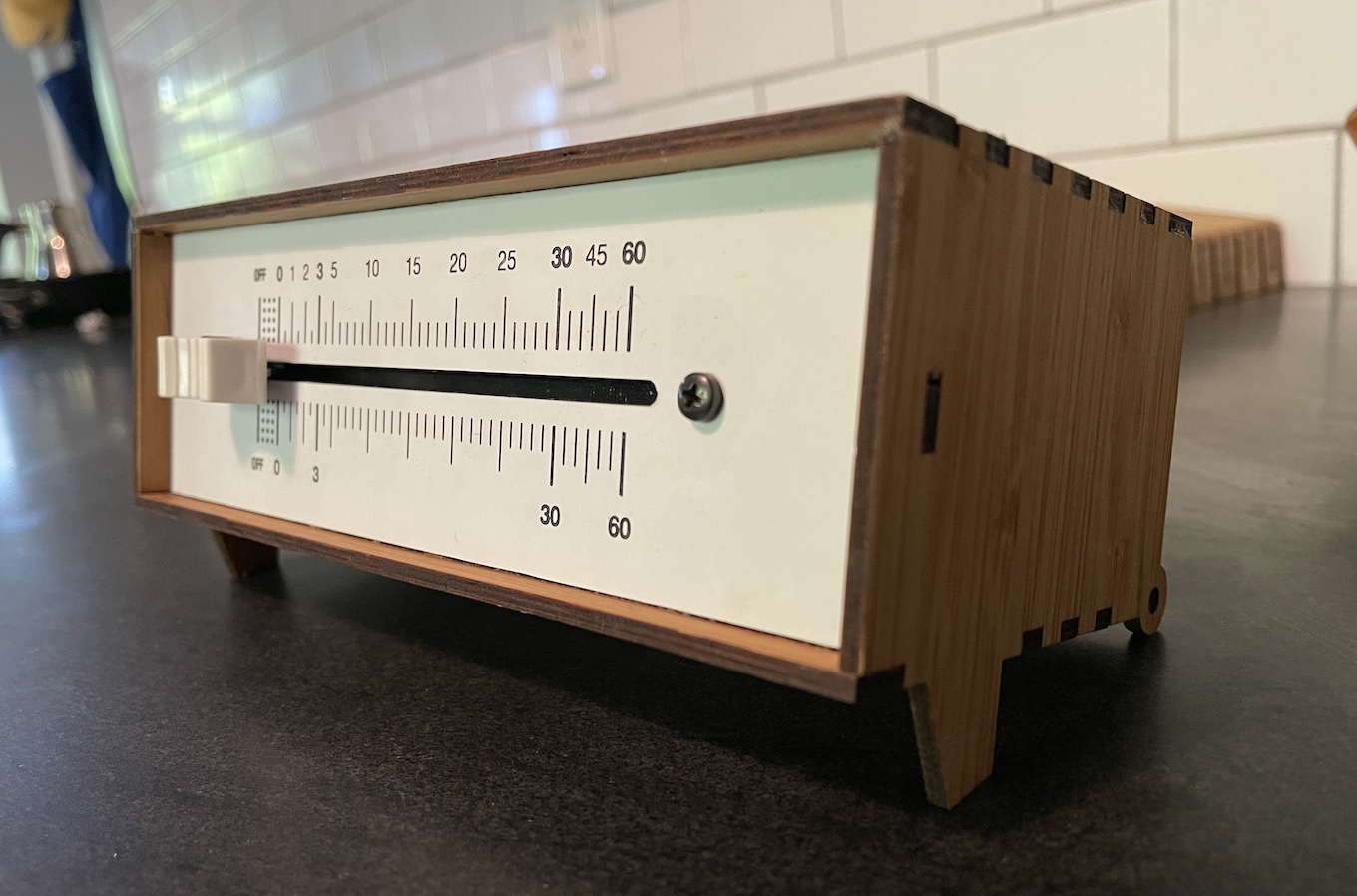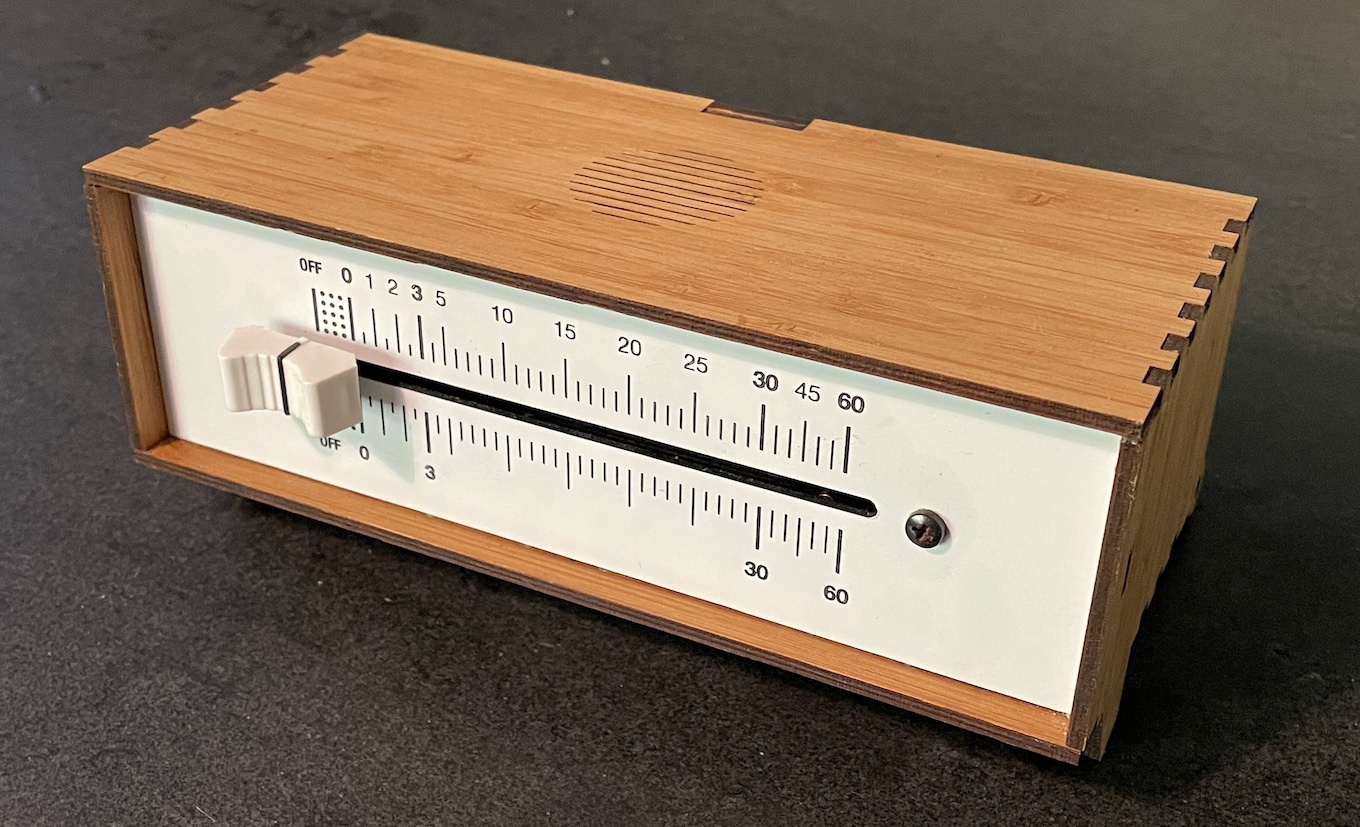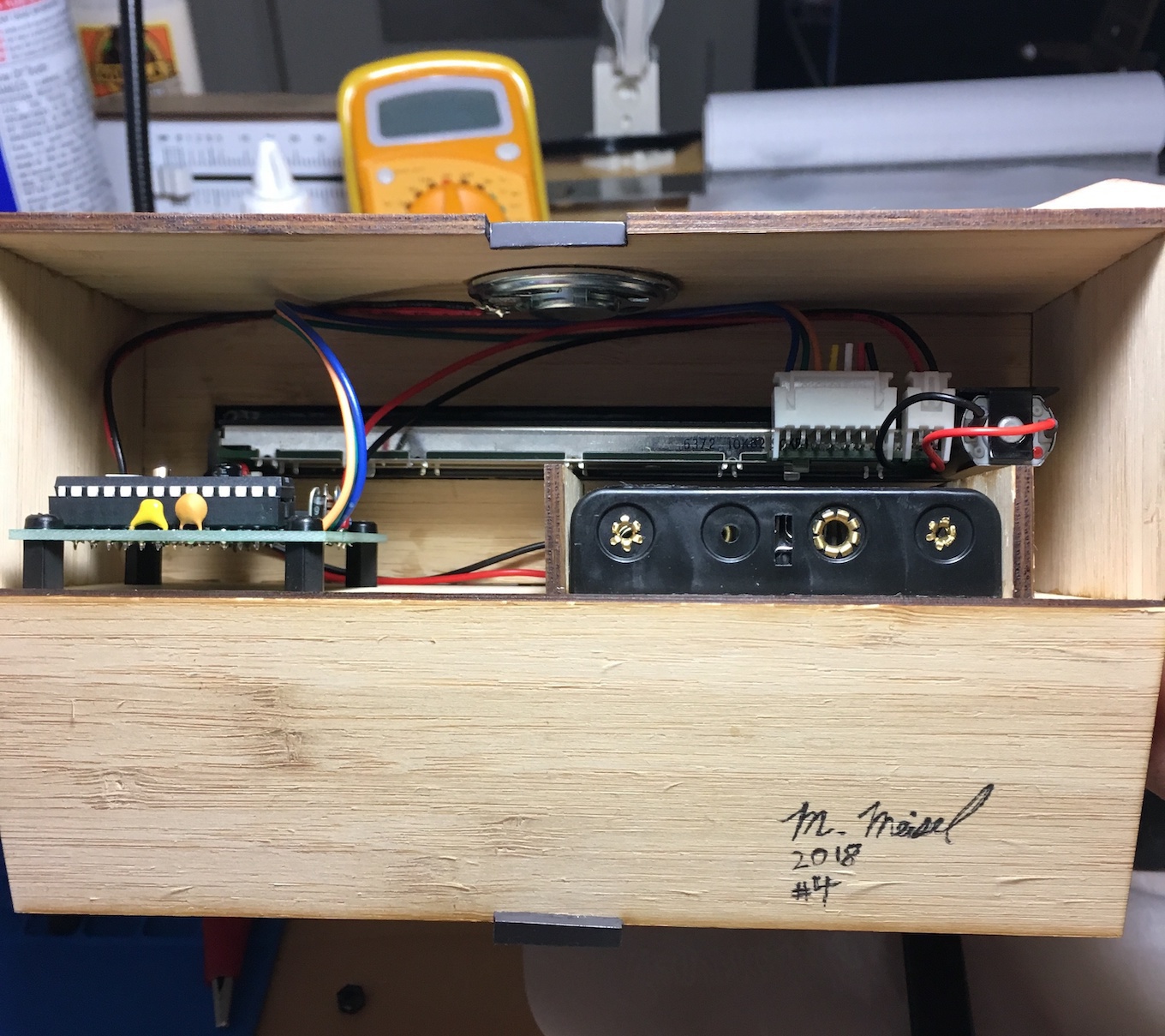Think of consumer electronics today and you imagine a sea of blinking blue LEDs, backlit screens, and digital beeps. Even something as simple as a kitchen timer bears no resemblance to its mechanical predecessors. The slide timer asks, does a digital mechanism necessitate digital design? Or can we combine the precision and convenience of a digital device with the simplicity and aesthetics of an analog one?

The slide timer is a fully functional kitchen timer inspired by spring-driven, mechanical twist timers. To operate, one simply slides the knob to the desired time. The knob moves towards zero on its own to indicate the time remaining. When it reaches zero, a bell sounds. To turn it off, one slides the knob below zero. There are no other controls.

The timer is powered by a custom PCB with an ATmega328P microcontroller, custom, Arduino-based software, 4 AA batteries, a speaker, and a motorized slide potentiometer. The enclosure is constructed from laser-cut bamboo plywood, a laser-cut (and engraved) acrylic panel, a stock slide knob, wood glue, and magnets.
